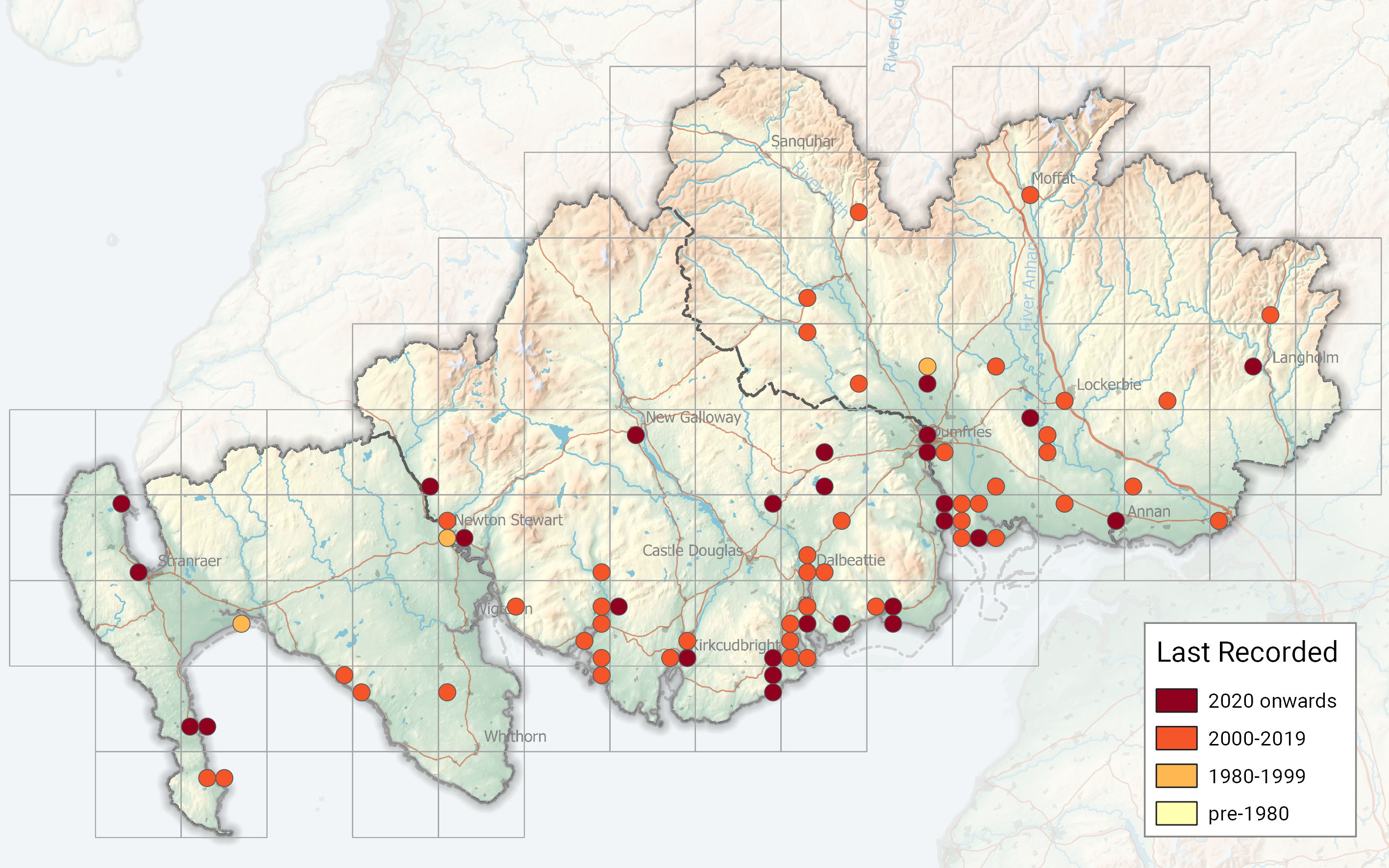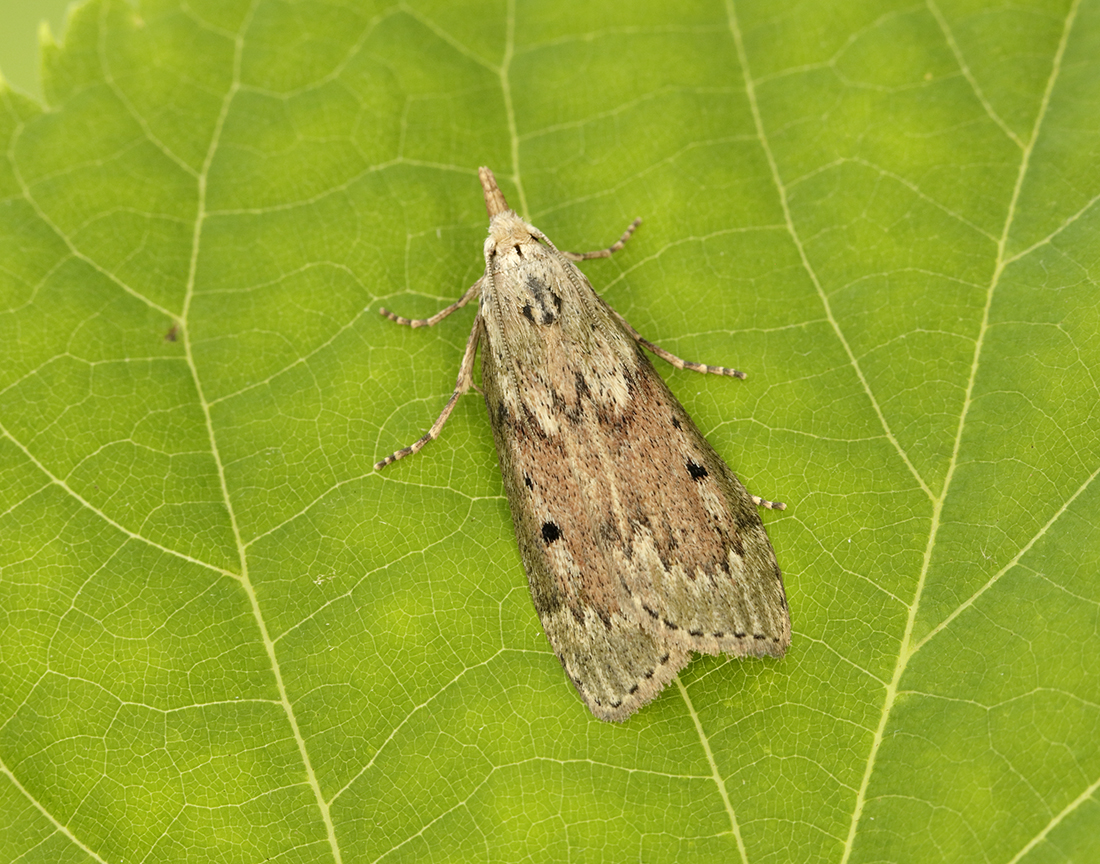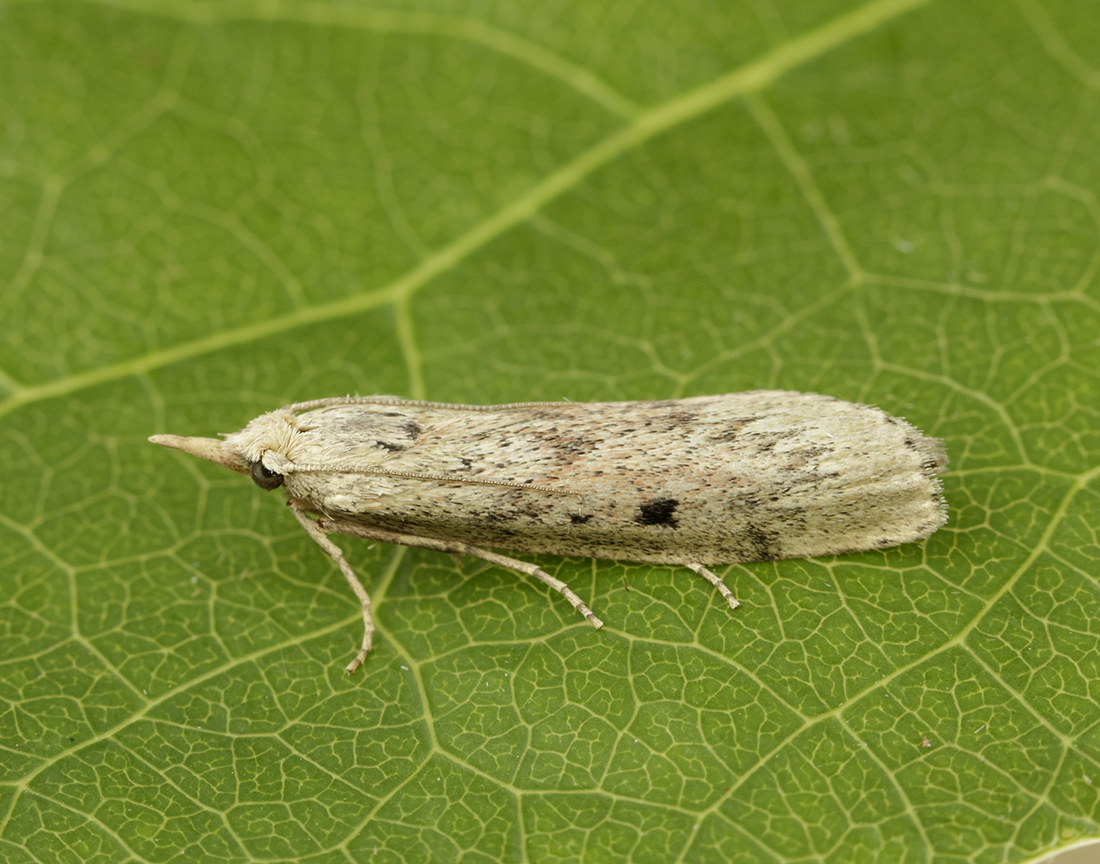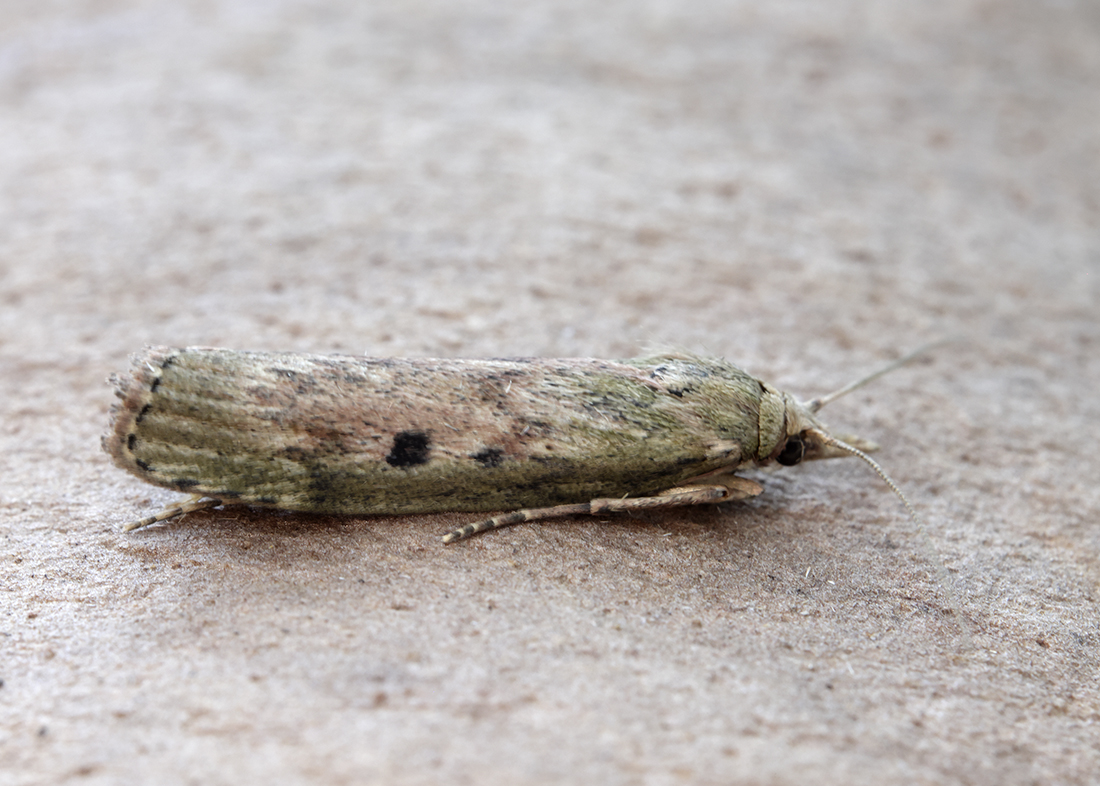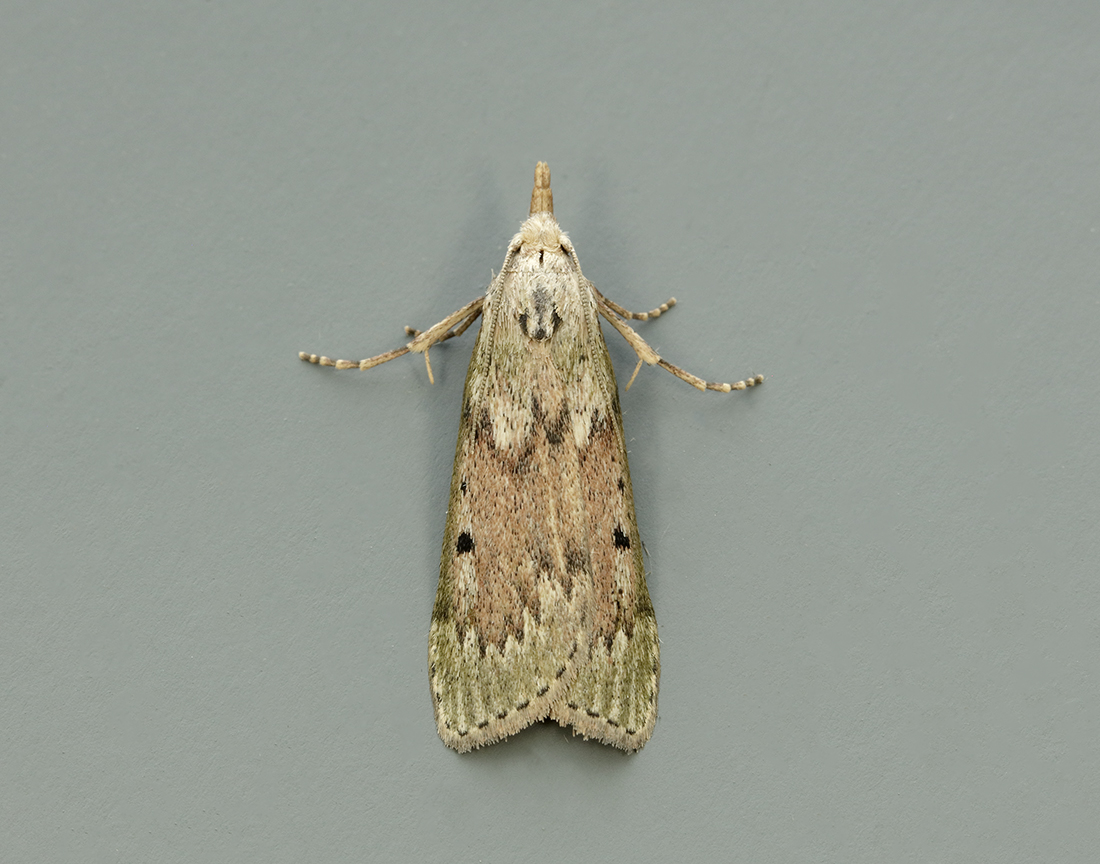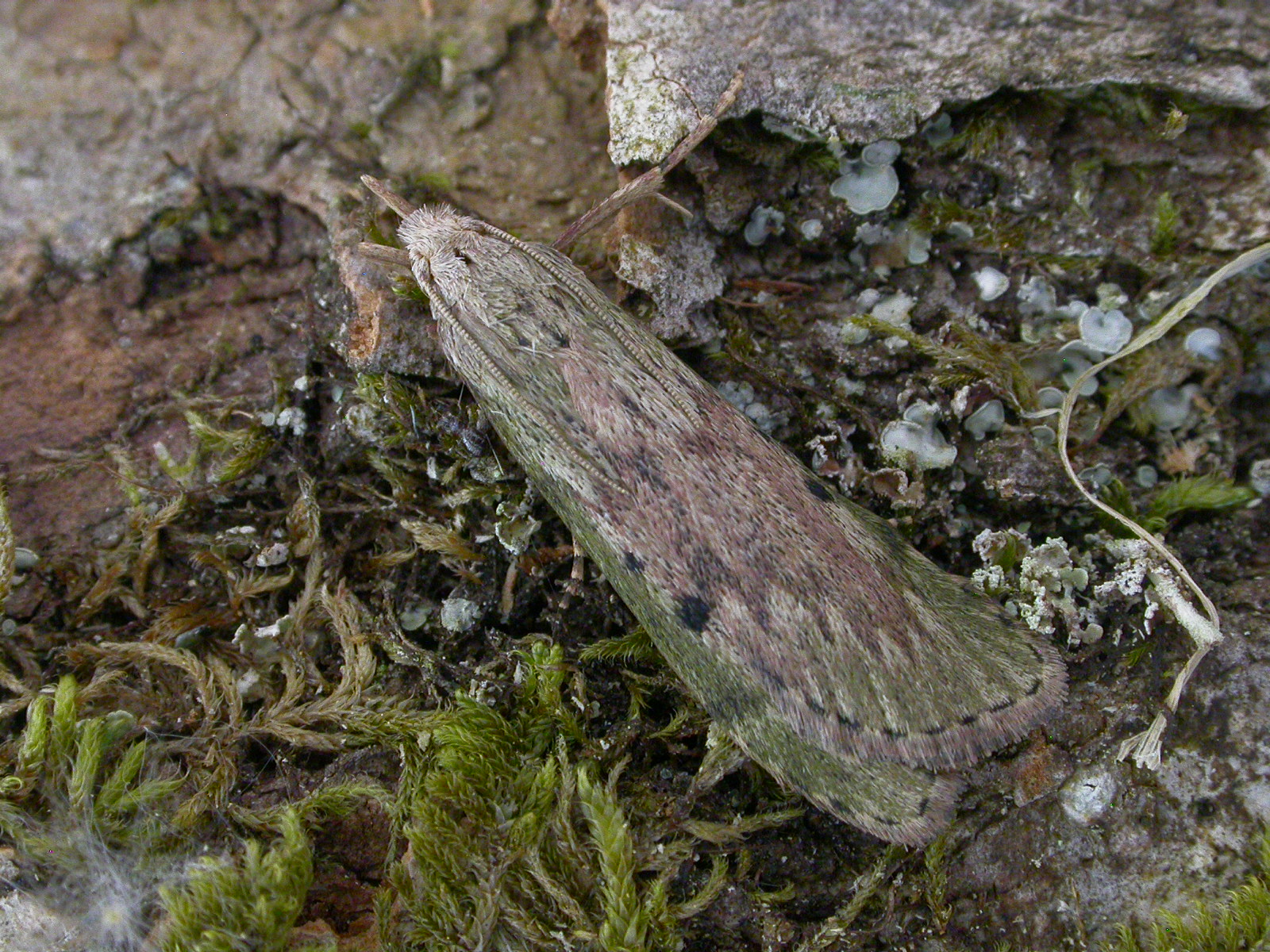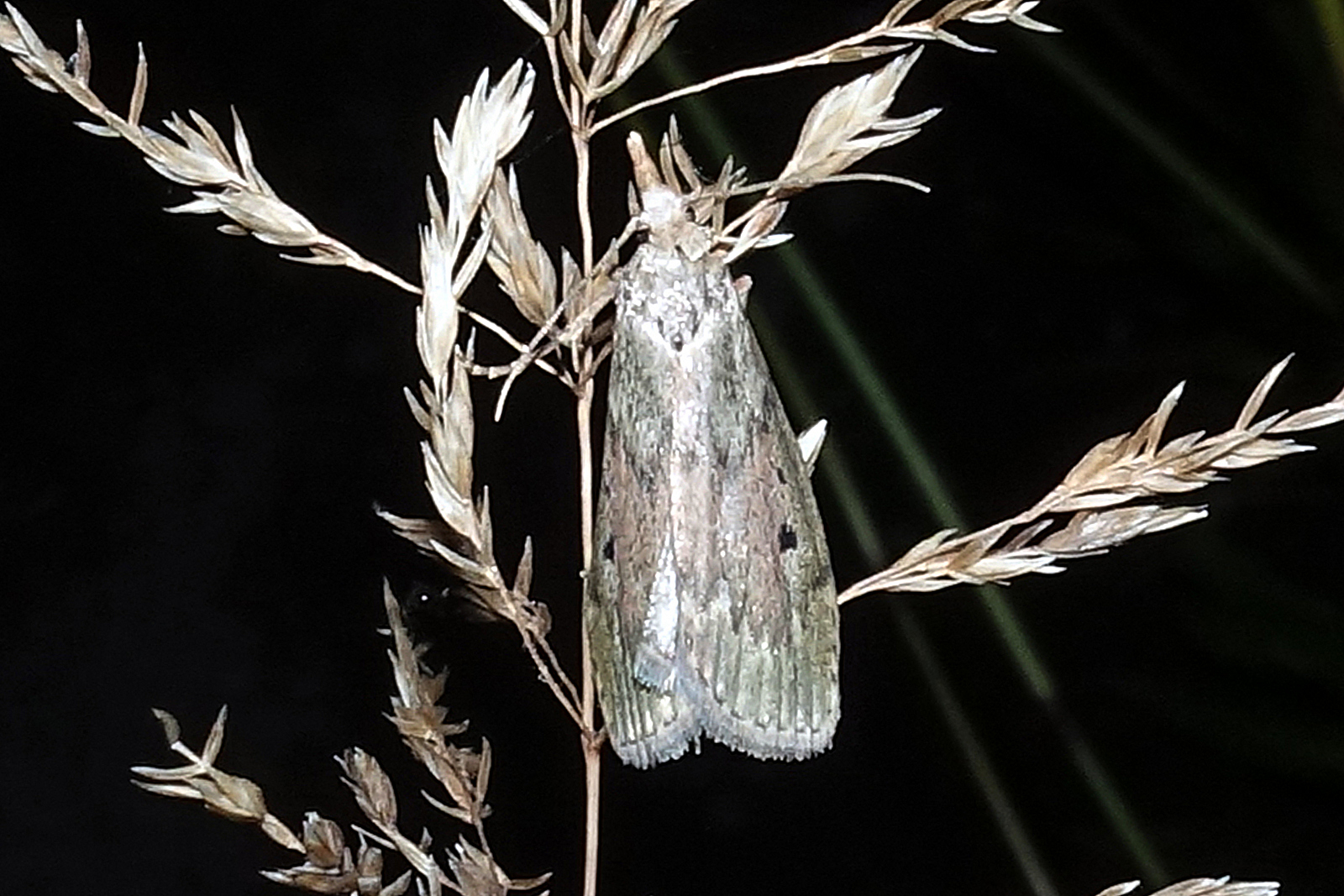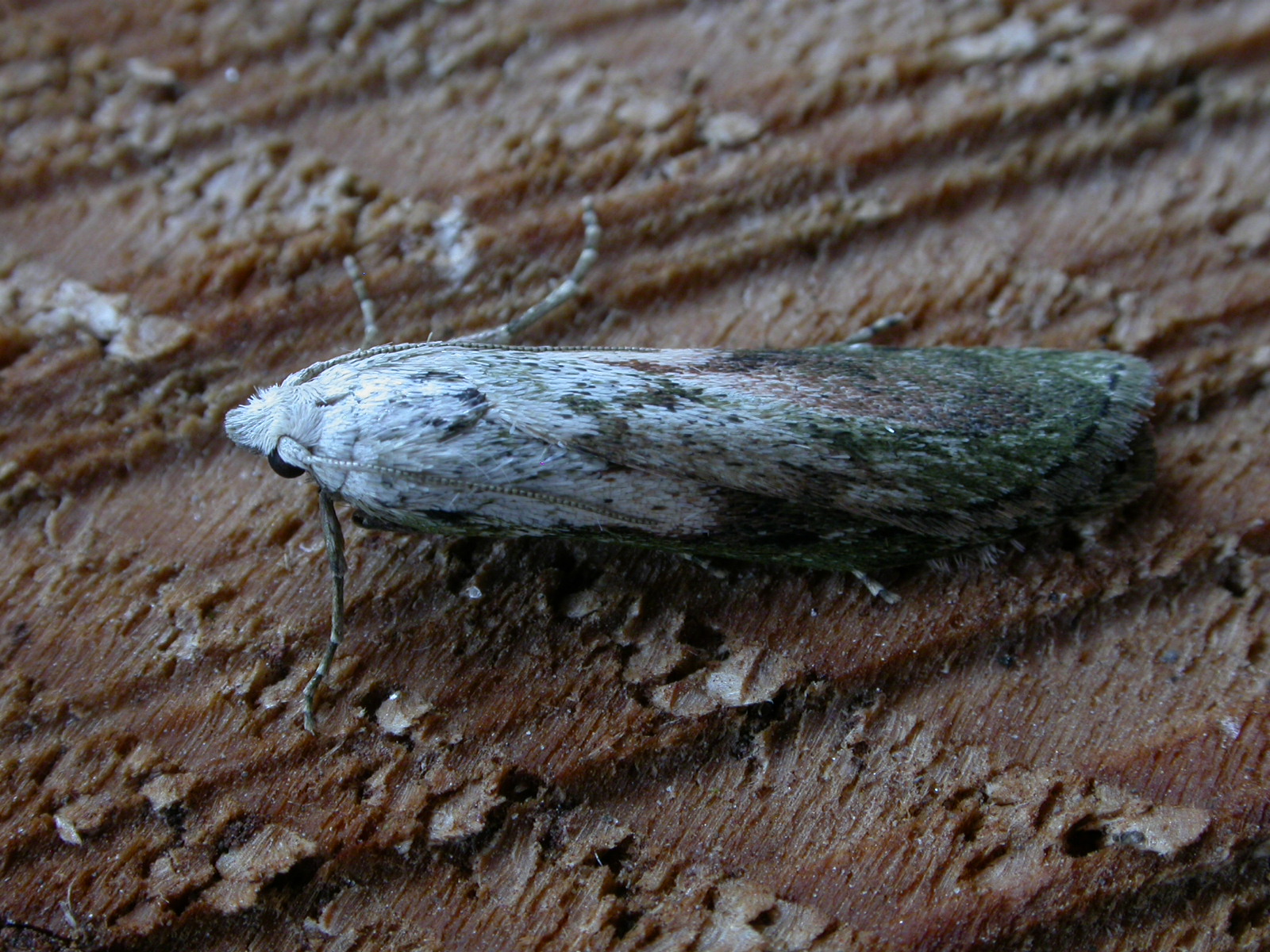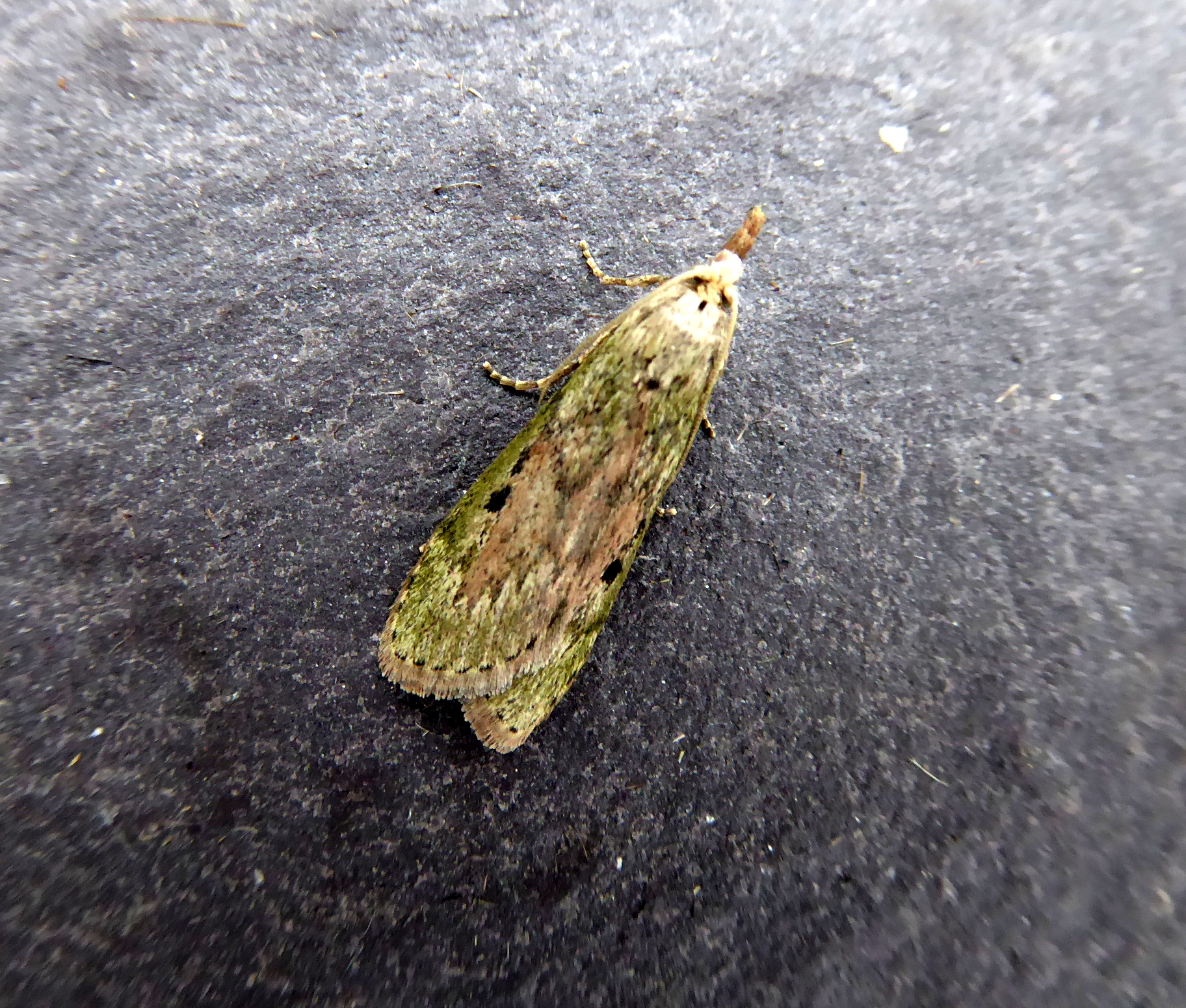Identification
Sexually dimorphic.
Recording method
Comes to light.
Flight period
April-September.
Larval foodplants
Honeycomb in nests of wasps or bumblebees, the moths preferring nests above ground. Also feeds on accumulations of dead insects.
Habitat
Woodland, scrub, parkland, hedgerows, gardens.
History
The first for Dumfries & Galloway was found at Castlehill in Kirkmahoe parish, Dumfriesshire, on 1st July 1978 by Sir Arthur Duncan, specimen at National Museums Scotland, while the first for Wigtownshire was found at Newton Stewart on 23rd July 1990, with the Kirkcudbrightshire first being found at Mersehead RSPB on 20th July 1996.

